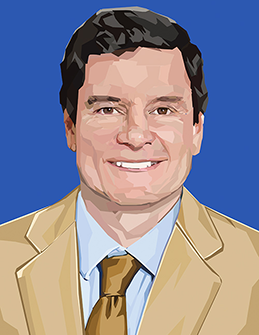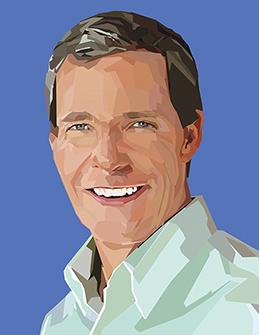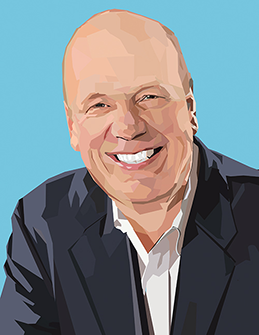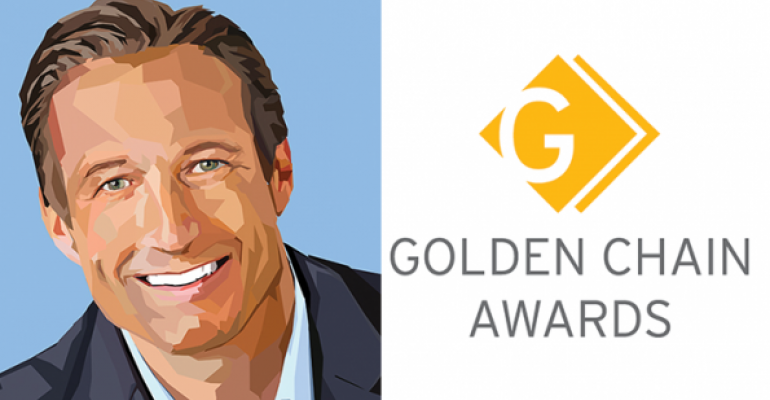
Paul Brown, CEO of Arby’s Restaurant Group Inc., took the helm of the 3,300-unit quick-service sandwich chain in 2013, after serving as president of brands and commercial services at Hilton Worldwide.
Brown led Atlanta-based Arby’s, founded in 1964, into the modern era by putting a meatier spin on marketing and increasing sales. Arby’s, which was acquired in 2011 by Roark Capital Group, grew U.S. systemwide sales by nearly 9 percent in 2015, reaching $3.5 billion, according to Nation’s Restaurant News’ Top 100 report.
Brown spoke with Golden Chain winner Steve Romaniello, chairman of Atlanta-based Focus Brands Inc. and managing director of Roark Capital Group.
Steve Romaniello: You’ve been at Arby’s a little over three years. What would you say are the most significant changes you’ve made to the brand and to the company?
Paul Brown: First, we really spent a lot of time thinking about what our purpose statement was as a brand and as a company, because I’m a big believer that any organization, whether it be for profit or nonprofit, needs to have a clear purpose. …
The second thing we did out of that was spend a lot of time with the franchisees and with the team members trying to outline a clear vision for where we were trying to go. What we like to say is, let’s paint a picture for what Arby’s will be and look and feel like in five to seven years if we’re successful. What would it feel like and look like in terms of the food and the building and how we talk about ourselves and the culture? We spent months getting alignment with the franchisees around that vision. My belief is if you have a clear vision that everybody is aligned around, then it makes the day-to-day decisions underneath that a lot easier. …
Then the third thing is really trying to drive a clear culture that is aligned with the vision and is aligned with the purpose statement that everybody can rally around, get excited around, that people feel proud to be part of the Arby’s system, feel proud to tell people they work at Arby’s.
SR: How do you keep a legacy brand like Arby’s relevant to modern consumers?
PB: I do think it starts with determining who your target consumer is, because I think if you’re going to be relevant, you need to know who you’re trying to be relevant to. …
So it really starts there, because once you know who you’re trying to [attract], then you can orient everything you do as a brand, which gets to the second point. Everything needs to be aligned. That means that what you do from a product standpoint, a service standpoint may be unappealing to your non-target customers, right? So that’s where you have to kind of make some choices. …
Then I think the third thing that’s very important, particularly today, is authenticity. … You can’t fake your customer out anymore. It has to be real, and it has to be as non-corporate as possible, particularly if you’re trying to go for the younger consumer, which we have, and obviously most people are as well. What’s really, really important to consumers today is authenticity.




SR: You guys have done a terrific job in expanding your reach from a customer standpoint, and one of the ways that you’ve done that is with social media, where you and your team have been quite nimble. In addition to the authenticity … what other advice do you have for others about capitalizing on this relatively new form of communication?
PB: A few things that we’ve done here is, first, we did invest, and I do think you need to make some investment in being able to really see, in as real time as possible, the conversations that are going on. Social media is a phenomenal way to listen — to not just your customer base but the entire landscape out there — and see what’s resonating and what’s not. …
The second thing you need to do is empower your team, whoever is actually the voice of social media, to act in real time. … Then the third thing, back to this authenticity, is try where possible not to manufacture the conversation, but actually magnify conversations that have already started. …
Everything our social media team does is tightly coordinated with everything our advertising team does and everything our PR team does. They all work together in concert; they’re not an island off doing their own thing.
Top traits of restaurant leaders

SR: You have built really an amazing team, in my opinion one of the absolute best in our business. As you’ve done that, what are the traits that you look for in restaurant leaders?
PB: I like to look for, one, great athletes: people that have proven that they can do things in their previous career, but most importantly, have high potential. I’m not necessarily looking for the person who has done exactly what I’m hiring them to do four times. I’m looking for someone who has shown the potential to grow in every role that they’ve taken in the past. … The second thing is I’m very big on the team, and particularly when it comes to my executive team I want not only just complementary skill sets, but complementary styles and complementary backgrounds. … And then the last thing is I look for people that are self-starters and people that actually know how to, for lack of a better word, really fail and pick themselves back up and improve.
SR: What are some of the mistakes that you’ve made along the way that you’ve learned from?
PB: I grew up in consulting, and consulting is a great learning place for starting a career. But sometimes, if you spend a lot of time in consulting, you don’t have a full appreciation for what it actually takes for large organizations to implement [change]. Ultimately, in a large organization things are implemented and executed by a lot of people all over the place, out of your line of sight, right? It’s not executed by one individual or two individuals. … So understanding the difference between the role that you play in setting the vision and the strategy versus the role that the leader plays in actually creating the right kind of environment and culture, where people are aligned around where they’re going, and they’re clear around where they’re going.
SR: Will you point to people in your career who have inspired you or mentored you, and share what special insights they may have given you over time?
PB: A few of the big [lessons] that I’ve learned is the power of really empowering the team member and the power of “we” versus “me.” The greatest bosses I’ve had in my career, really, ultimately, it has been about the organization and not about them. … Another attribute that I’ve taken away from great bosses is listening and finding the right time. Not coming into meetings with a set agenda and necessarily telling everybody the way they think it should be, but find that right style of listening to what’s being said, interjecting at kind of the right time, asking the right kind of questions, asking different questions, and certainly not shutting down conversations.
 Steve Romaniello, chairman of Focus Brands Inc. and managing director of Roark Capital Group, was named a Golden Chain Award winner in 2011.
Steve Romaniello, chairman of Focus Brands Inc. and managing director of Roark Capital Group, was named a Golden Chain Award winner in 2011.

